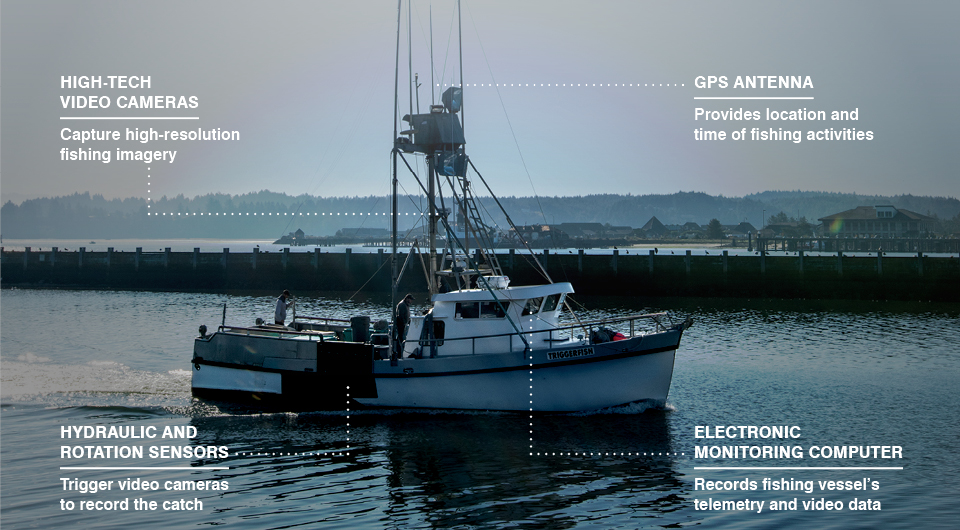This is the high-tech future
of fishing
While technology drives sweeping changes in virtually every economic sector, the $130 billion global fishing industry is still largely in the dark.
There’s vast potential to shift the trajectory.
Equipping boats with powerful digital tools could help stem industry losses while targeting the biggest threat to our oceans.
More on our work to make fishing sustainable

From pen and paper to sensors and satellites
Just a small percentage of the more than 10,000 fisheries around the world use rich data streams and sophisticated science. Most fisheries don’t even monitor what they catch.
Those that do collect monitoring data typically use paper forms, which someone must transcribe into spreadsheets and then prepare for analysis. The process can take months, and it’s fertile ground for mistakes.
Creating fleets of “smart boats” able to move data through satellites and cellular networks can generate an unprecedented new level of information about fisheries and the oceans — in real time.
What makes a boat smart, and why does it matter?
What’s at stake? Jobs. Revenue. Ecosystems.
Today, at least 10 percent of the world’s people make a living from seafood. Correcting decades of fishery mismanagement could add more jobs and more than $80 billion to the global economy.
It could also reverse the biggest threat to our oceans — overfishing, which has pushed a third of the world’s fisheries into danger. Management based on sound science is already a proven remedy.
Adding advanced technology makes management, and fishing itself, more efficient. Fishermen boost profits, while protecting marine ecosystems.
Overfishing: The oceans' most serious environmental problem
How smart boats are shaking up the system
Technology is becoming increasingly essential to driving results at the scale needed to make the oceans thrive. These are just a few promising bright spots:
| Technology | Potential for fisheries | Real-world uses |
|---|---|---|
| Sensors | Monitor fishing activity in close to real time | EDF's Smart Boat Initiative is testing new systems in the Pacific Northwest to cut monitoring costs. |
| Artificial intelligence | Identify and count fish in photos and videos | Scientists in Alaska are testing machine learning to automate the monitoring process and cut costs. |
| Networks | Quickly send and receive a variety of fishing data | Fisherman in Sweden can check their available quota online and trade with other fishermen. |
Video: Watch sensors and machine learning at sea
Where smart boats can lead the industry
As technology advances, it’s possible to envision a future where fleets of smart boats are equipped with advanced cameras, trackers, sensors and other data-gathering instruments.
Onboard computers will leverage advances in data analytics to process and analyze more data onboard than ever before.
Satellite and cellular modems will transmit data products to scientists, managers and seafood buyers wirelessly in close to real time.
Plus, being able to communicate easily with friends and family while at sea will help improve the quality of life, enticing a larger pool of potential workers.
By bringing the digital revolution to fisheries, we can empower fishermen and others to make decisions that lead to more fish in the water, more food on the plate and more prosperous fishing communities.
Data that drives action: How MethaneSAT can cut climate pollution
Our experts
-

Shems Jud
Director, Japan Fisheries & Oceans
-

Dustin Colson Leaning
Senior Specialist, Fisheries Innovations and Policy
-

Christopher Cusack
Director, Oceans Technology Solutions
MEDIA CONTACT
Maddie Voorhees
(415) 293-6103 (office)










